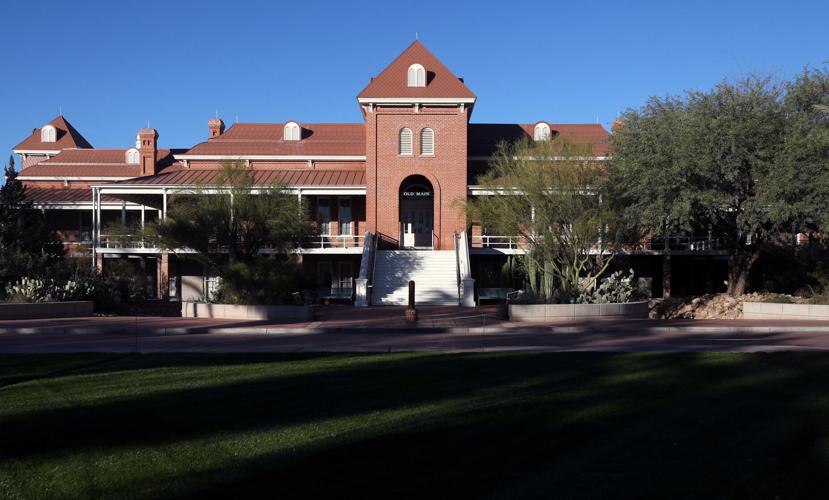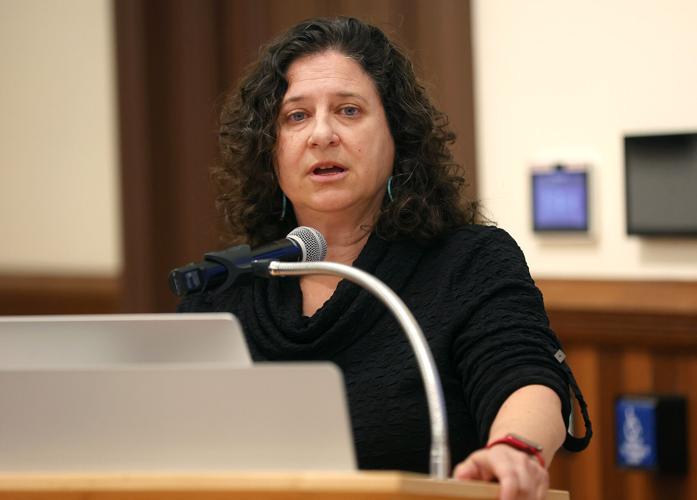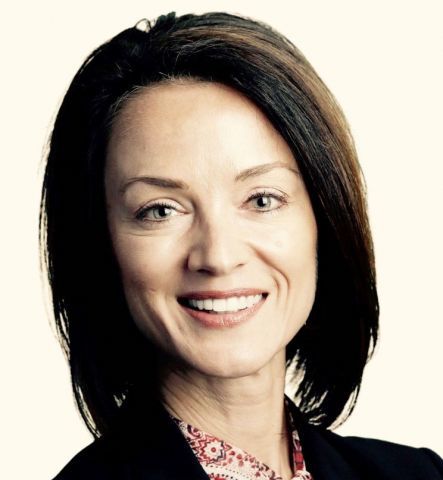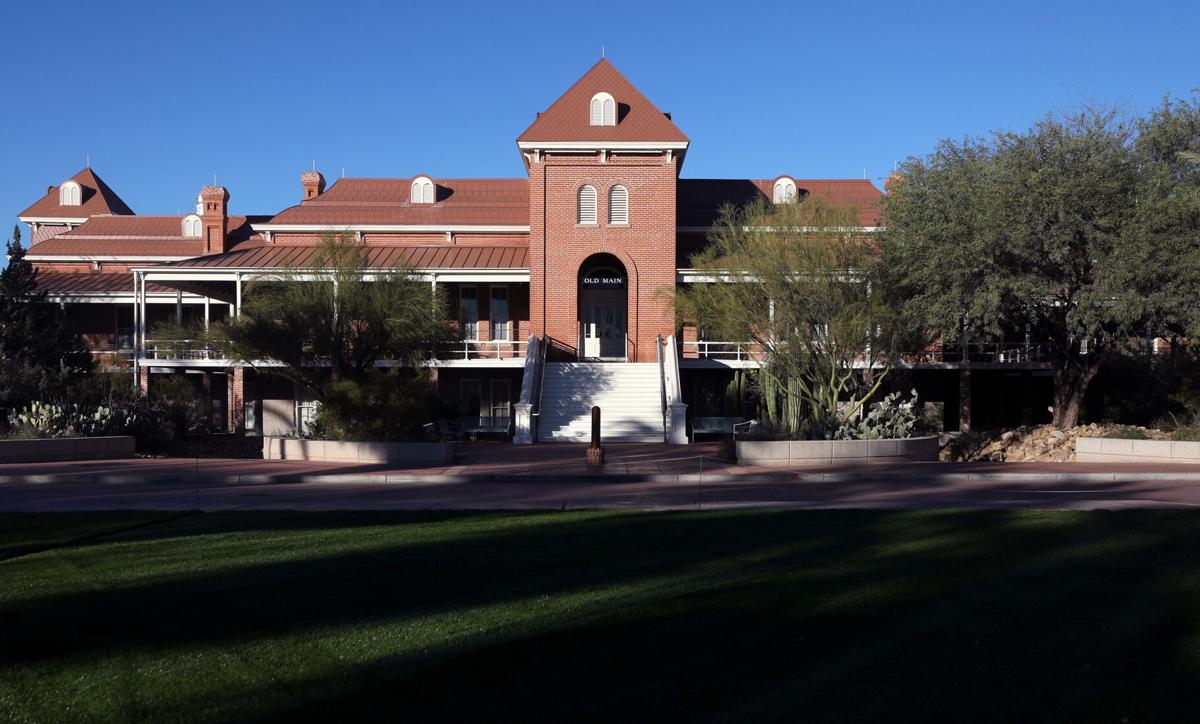The University of Arizona’s financial crisis has led to the impending resignation of UA President Robert C. Robbins, tensions in the Faculty Senate, and the chair of the Arizona Board of Regents stepping down.
The Arizona Daily Star was the first outlet to report on the financial crisis and has published more than 70 stories on it since news broke last November. Here is a timeline of some key events leading up to Robbins’ upcoming departure.
Nov. 6, 2023: In an ABOR meeting, Robbins and the university’s then-Chief Financial Officer Lisa Rulney announce the UA will cut budgets and possibly enact a hiring freeze after miscalculating the days cash on hand the university has. Robbins reports he believes there was a miscalculation of $240 million.

Rulney
“We made a bet on spending money,” Robbins said at the time. “We just overshot.”
Nov. 7, 2023: “Draconian cuts” are coming to the university, Robbins tells the Faculty Senate. Robbins told the Star after the meeting that he believed there were only two or three UA colleges in a deficit. In reality, he would later acknowledge, there were 61 units in deficit.
Nov. 22, 2023: In an email to employees, Robbins commits to not imposing employee furloughs or cuts to retiree benefits. He also commits to not reducing need-based financial aid for students, writing that any decisions about financial aid would strictly affect students receiving merit-based scholarships. He made no comment about layoffs.

University of Arizona President Robert C. Robbins, right, and UA Interim Chief Financial Officer John Arnold.
Dec. 4, 2023: Senior administrators and faculty members in the College of Agriculture, Life and Environmental Science tell the Star that they repeatedly warned university officials, including Rulney, Robbins and then-Provost Liesl Folk, that the continued spending of reserves would lead to a deficit. In response, university leaders forced them to keep spending down their resources, they said.
Dec. 5, 2023: Robbins tells the Faculty Senate there will be employee layoffs in the athletics department and ticket-price increases for fans. He also reveals that the athletics department has taken out loans from the university of about $87 million in recent years. Robbins shares that his own office of the president has overspent the most, and that in the past 10 years, central administration “has grown by 69%.”
Dec. 11, 2023: The Faculty Senate calls for an external audit of the university’s finances.
Dec. 13, 2023: In a special meeting with ABOR, Robbins announces his financial action plan, which includes CFO Rulney “stepping down.” In this meeting, he does not reveal that she is still employed at the university and has retained her $500,000 salary. John Arnold, the executive director of ABOR, will take her place in an interim role.
Jan. 4, 2024: Moody’s Investors Service, a nationwide bond credit rating business, says the ABOR intervention into the UA’s financial crisis is a “credit positive.”
Jan. 9, 2024: Former CFO Rulney is revealed to still work at the UA as a senior advisor to business operations and still makes her salary of $506,325, according to internal payroll documents obtained by the Star.
Jan. 20, 2024: United Campus Workers of Arizona union calls for Robbins to resign.
Jan. 22, 2024: Athletic Director Dave Heeke is stepping down from his position, Robbins announces. Heeke was reportedly forced out and will be paid out his salary through 2025.

Dave Heeke, former UA athletic director
Jan. 26, 2024: Gov. Katie Hobbs weighs in on the financial issues facing the university in a scathing letter. “I no longer trust the process that is in place,” she writes. “This is no longer just about finances. This is about a lack of accountability, transparency, and at the end of the day, leadership.”
Jan. 29, 2024: Interim CFO Arnold announces that the UA is operating in a $177 million deficit and faces layoffs and budget cuts between 5% and 15%. Sixty-one of the 81 units within the university — 75% of them —overspent in fiscal year 2024. Robbins’ strategic plan initiatives have cost the university “about $150 million” in the last five years, Arnold said.
Jan. 30, 2024: The UA must cut about $200 million in spending this fiscal year and should seek to “narrow the scope of the mission” as it right-sizes, Arnold tells the faculty.
Feb. 5, 2024: Faculty Senate Chair Leila Hudson accuses Robbins of “tone deaf mansplaining” in shared governance meetings, as she expresses her frustration with Arnold’s financial action plan.
Feb. 9, 2024: The UA has found $27 million in savings by “permanently eliminating currently vacant positions” in colleges, according to a letter sent to Hobbs. The UA has refused to release any data on what those positions are, as well as what departments and colleges they are in.
Feb. 10, 2024: Despite the hiring freeze, the UA promotes three senior administrators, the Star reveals. Each makes between $300,000 and $400,000.
Feb. 22, 2024: ABOR defends the purchase of the former Ashford University, now UA Global Campus, in a new report, saying the financial and legal risks were known. Also: ABOR Chair Fred DuVal sends a cease-and-desist letter to Faculty Senate Chair Hudson after she accused him of a potential conflict of interest.

Chair Leila Hudson speaks during a UA Faculty Senate meeting.
Feb. 28, 2024: Gov. Hobbs blasts ABOR for “failed” oversight of UA. She also sharply criticizes DuVal for threatening legal action against Hudson.
March 1, 2024: ABOR Chair DuVal announces he will step down from his leadership position and John Arnold will take a leave of absence from his role as executive director of the board while serving as interim CFO of UA.
March 4, 2024: Robbins announces he will take a 10% pay cut. The next day, Hobbs calls that a “step in the right direction.”
March 12, 2024: Moody’s Investor Services, a nationwide bond credit rating business that previously rated the UA as “credit positive,” changes its outlook on the university to “negative.”
April 1, 2024: After a report from The Arizona Republic about the hiring of a lobbyist to work on the UAGC acquisition, Hobbs tells the Star that she is “continuing to lose patience” with the UA’s financial crisis.
April 2, 2024: Robbins announces he will step down at the end of his contract on June 30, 2026, or sooner, if ABOR finds a replacement before then.
“It is time to begin to think about what is next for the university, and I will continue to serve the institution and work with ABOR to ensure a smooth transition at the appropriate time,” he writes to students and employees.
University of Arizona President Robert Robbins gives a financial update: Dec 13
University of Arizona President Robert Robbins talks about the financial issues facing the university and possible solutions at a Faculty Senate meeting on Nov. 6.









